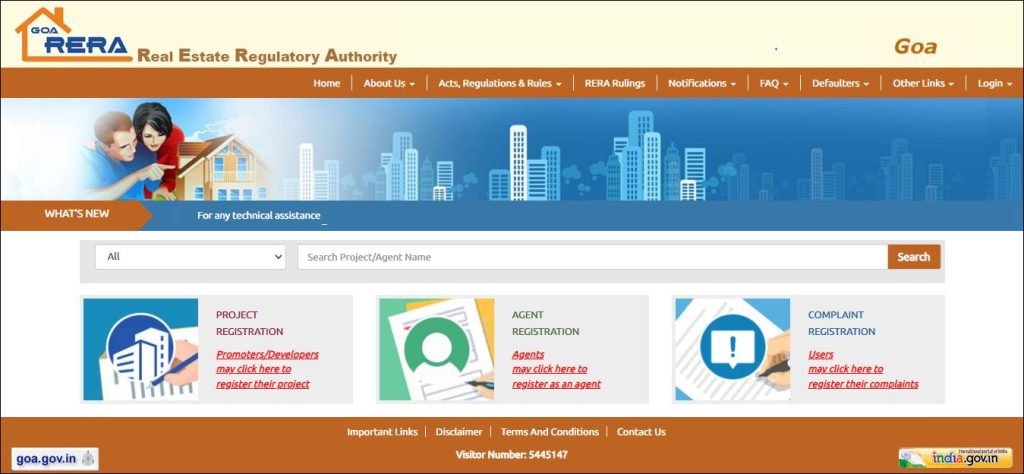The ability of a mortgagee to reclaim a mortgaged asset following debt repayment is known as redemption. The mortgaged property is kept secure to return to the mortgagor after the obligation is settled.
The Mortgagor’s right
The Transfer of Property Act of 1882 grants the mortgagor a number of privileges. These protections are there to protect borrowers from being taken advantage of. The following rights belong to the mortgagor:
- After debts are paid, you have the right to redeem the property (Section 60)
- The mortgagor may request the mortgagee to transfer the property to a third party rather than to him again (Section 60A)
- The mortgagor may request the mortgagee to provide documents pertaining to the mortgaged property, and may then examine such records (Section 60B)
- The mortgagor shall be entitled to benefit from any accession made to the property while it was in the hands of the mortgagee upon redemption of the property (Section 63)
- Any modifications made to the mortgaged property while it was in the mortgagee’s ownership are likewise entitled to the benefit of the mortgagor (Section 63A)
- When a mortgagor mortgages a lease property and the lease is renewed while the mortgaged property is still in the mortgagee’s possession, the mortgagor is entitled to profit from the renewed lease.
- The mortgagee may lease the property while it is in legal possession (Section 64). (Article 65A)

Transfer of Property Act, Section 60
The mortgagor has the option to redeem under Section 60 of the Transfer of Property Act of 1882. According to this section, the mortgagor has the right to demand that the mortgagee return ownership of the mortgaged property to him or to any other third party that he chooses, as well as transfer the mortgage deed and any other pertinent documents to him, once the debt has been paid in full and on time. Hence, the mortgagor has the option to redeem his property upon debt repayment, and this power is referred to as the property redemption option.
The following fundamentals of the right of redemption can be formulated from a cursory reading of the section:
- The mortgage must be legally enforceable and valid.
- The mortgagor has the option to redeem the property by paying the loan, but a court may prevent him from doing so.
- The mortgage funds must be disbursed to the mortgagee or his representative at the appropriate location and time.
- The right to mortgage redemption may be enforced through legal action brought by the mortgagor.
In the English case of Stanley v. Wilde, a mortgage was defined as the act of giving a third party the right to an immovable property interest as security for a debt.
The Transfer of Property Act of 1882’s Section 60 envisions two critical concepts.
- Once a mortgage, always a mortgage
- Clog on redemption
Once a mortgage, always a mortgage
The right to redeem a mortgage cannot be limited or terminated because a mortgage is always a mortgage. This right of redemption is generally applicable to all mortgages. According to the court’s ruling in Noakes & Co Vs. Rice, the mortgagee cannot impose any reservations that would prevent the mortgagor from exercising his right to redemption after paying the loan and any applicable interest. In the case of Knocks v. Roulds, the court ruled that a mortgage is always going to be a mortgage.
Clog on Redemption
Any clause in the contract that limits the mortgagor’s ability to redeem the property after making the required principal and interest payments is invalid under the notion of clog on redemption. This doctrine is comparable to the idea of “once a mortgage, always a mortgage.”
The notion of the clog was established in Stanley when the court ruled that any obstruction to the right of redemption in a deed would render it void from the beginning. The Indian courts have also upheld this principle.
The doctrine of clog on redemption is founded on the idea that because of the mortgagee’s dominating position, any clause that limits the mortgagor’s right to redeem would be an abuse of that position by the mortgagee and would be in violation of the principles of justice, equity, and good conscience.
The Apex Court ruled in the landmark case of Vadilal Chhaganlal v. Gokaldas Mansukh that any restrictions or terminations of the mortgagor’s right to redemption imposed upon him would be null and void.
When the right to redemption is lost
According to Section 61(a) of the Limitation Act of 1963, the right of redemption expires 30 years after the right was first accrued.
The proviso to Section 60 states that if a lawsuit is filed with a court and a judgment is rendered by the court against the mortgagor, this right is no longer available when the deadline for principle repayment has passed.
Also, the right of redemption would expire if the state obtained the mortgaged property.
In the case of Moro v. Balaji, it was ruled that the mortgagee would be able to keep the share of the mortgaged property that he personally acquired, and the mortgagor could redeem his share.
Different Mortgages
The Transfer of Property Act, 1882’s Section 61 envisions a scenario in which a mortgagor mortgages several properties to the same mortgagee. When the principal balance is due, the mortgagor can redeem the properties separately or jointly. A contract must not, however, conflict with the mortgagor’s preferences. By mutual agreement, the mortgagee and the mortgagor may opt to combine the redemption rights for all mortgaged properties.
Landmark Judgements
In the illustrious case of Prabhakaran and Ors v. M. Azhagiri Pillai (Dead) by Lrs. and Ors., the Supreme Court ruled that where a usufructuary mortgage stipulates that the mortgagee can possess the mortgaged property until the debt is repaid, the mortgagor may exercise his right of redemption in such a case by bringing a lawsuit within 30 years of the mortgage date. The court also ruled that the interpretation that there is no time restriction for the institution of the suit in cases of usufructuary mortgages is incorrect in law and that the mortgagor can file a suit to exercise his right only within thirty years of the institution of the usufructuary mortgage.
The Supreme Court of India held that while the mortgage deed may provide for a long term for payment, such terms must be justifiable, and a significantly long period would be considered a clog. This decision was made in the famous case of Pomal Kanji Govindji vs. Vrajlal Karsandas Purohit & Ors. 1988 SCR Supl. (3) 826. The Court ruled that when determining the validity of the period of payment, variables like inflation, real estate prices, interest rates (if any), the mortgagor’s financial and economic situation, etc., should be taken into account. The burden of proof lies with the mortgagee to demonstrate the validity of the period.
In the case of Seth Ganga Dhar v. Shankar Lal [AIR 1958 SC 770], the court held that although it had the authority to exempt the mortgagor from any clause of the contract that restricted the exercise of his right of redemption, it was also required to consider the pertinent facts and circumstances of the case in order to determine whether the mortgagor was forced into the agreement by taking advantage of his disadvantaged negotiating position. In this instance, the mortgage on the property was for 85 years.
On evaluating whether or not this time period was lawful, the Court noted that it did “not believe that everything in the mortgagee’s favor or that everything in the instrument was for his benefit and suggested that the mortgagee had pushed the mortgagor into a difficult bargain. We previously discussed how the agreement seems to have been fair and between parties who are interacting with each other on an equal footing”.
So, the clause would be regarded as legitimate if the court determined that the mortgagor and mortgagee were on equal footing. The Court determined, however, that a clause stating that the mortgagor must redeem the property within six months of the 85-year period’s expiration was illegal. The court will intervene and release the mortgagor from such an unfair arrangement only if the court is certain that the mortgagor has been unfairly ensnared by the mortgagee.
In the famous case of Bakhatawar Begum v. Hussaini Khanam, the court ruled that the deed might be redeemed because of a court order prior to the end of the time period specified in the contract.
The Transfer of Property Act is a supportive legal document with the purpose of “providing safeguard measures against tremendous financial hardship of the loanee in certain cases,” according to the Calcutta High Court in the case of Pranil Kumar Sett vs. Kishorilal Bysack and Anr. However, this benefit cannot be extended to recalcitrant and dozing borrowers.
Right to foreclosure
Foreclosure refers to the mortgagee’s ability to seek a court order prohibiting the mortgagor from exercising his right of redemption. The mortgagee is granted the power to foreclose in order to recoup the amount. Section 67 of the Transfer of Property Act of 1882 provides for this power.
When the obligation has become due, the mortgagor has not made payment, and the agreement does not set a specific deadline for repayment, the mortgagee has the authority to foreclose. Also, the mortgagor must not have used his redemption option.
When the debt owed by the mortgagor becomes due and the mortgagor has not obtained a decree for exercising his right of redemption, Section 67, which deals with the “Right to fore-closure or sale,” states that the mortgagee has a right to obtain a decree for preventing the mortgagor from exercising the redemption right or to obtain a decree for the sale of the mortgaged property. The statute of limitations for filing a lawsuit to exercise the right to foreclose is twelve years.
Bottom line
The right of the mortgagor to redeem the mortgage is therefore evident from the explanation above, and the mortgagee is unable to restrict or terminate this right. Any provision that renders the mortgaged property unredeemable after a predetermined amount of time would be in violation of Section 60 of the TPA. The mortgagor’s right of redemption is unalienable and coextensive with the mortgage.
By obtaining a court order to this effect, the mortgagee may take possession of the mortgaged property in their capacity as the original owner. If there are many mortgages on the same property, the mortgagee may redeem each mortgage individually or jointly, depending on whether a conflicting agreement is in place.
We can see that the mortgagee has also been granted the right to recoup the money that is really his. By virtue of Section 67, he may exercise his right of foreclosure. As a result, it is clear that the Transfer of Property Act is a useful legal regulation that aims to strike a balance between the rights of the mortgagor and the mortgagee while also taking into account the reality that, in most cases, the mortgagee is in a stronger negotiating position.
Follow and Connect with us: Twitter, Facebook, Linkedin, Instagram






















